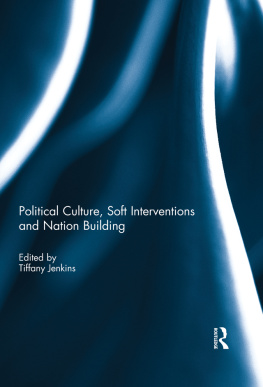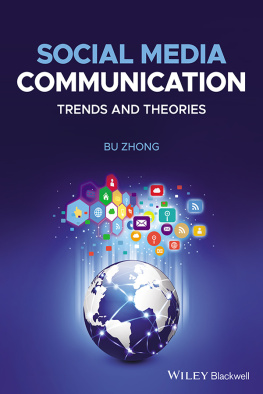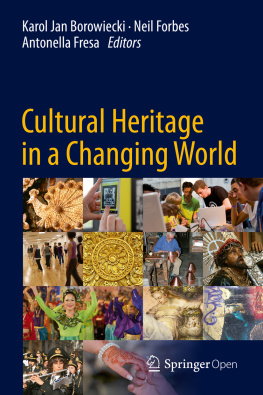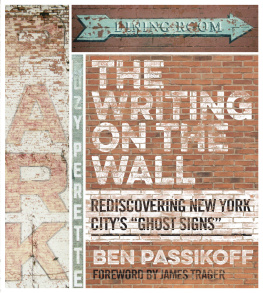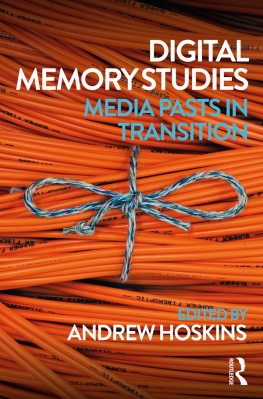Advertising and Public Memory
We are pleased to present the first scholarly collection on the worldwide interest in the faded remains of advertising signage (popularly known as ghost signs). Contributors to this volume examine the complex relationships between the signs and those who commissioned them, painted them, viewed them and view them today. Topics covered include cultural memory, urban change, modernity and belonging, local history and place-making, the crowd-sourced use of online mobile and social media to document and share digital artefacts, retro design and the resurgence in interest in the handmade. The book is international and interdisciplinary, combining academic analysis and critical input from practitioners and researchers in areas such as cultural studies, destination marketing, heritage advertising, design, social history and commercial archaeology.
Stefan Schutt is an Honorary Fellow and former Research Program Leader at the Centre for Cultural Diversity and Wellbeing, Victoria University, Melbourne, Australia. Stefans research interests revolve around the everyday uses of digital technologies. He is particularly interested in the intersection of technology, narrative and identity. Stefan is the founder of a number of award-winning community technology projects. He is also a ghost sign aficionado, and the creator of the Lewis & Skinner online signwriting document archive: www.lewisandskinner.com.
Sam Roberts is Director of Ghostsigns and Better Letters, and Associate Researcher at the Typographic Hub, within the Birmingham Institute of Art and Design, UK. In addition to numerous published articles on ghost signs, Sam authored and published Hand-Painted Signs of Kratie about street signs in Cambodia. He curated the History of Advertising Trust Ghostsigns Archive, and leads the Ghostsigns Walking Tours in London.
Leanne White is a Senior Lecturer in the College of Business at Victoria University in Melbourne, Australia. Her research interests include national identity, commercial nationalism, popular culture, advertising, destination marketing, events and cultural tourism. She is the author of 50 book chapters and refereed journal articles, and co-editor of the Routledge research books: Wine and Identity: Branding, Heritage, Terroir (2014), Dark Tourism and Place Identity: Managing and Interpreting Dark Places (2013), and Tourism and National Identities: An International Perspective (2011).
Routledge Research in Cultural and Media Studies
For a full list of titles in this series, please visit www.routledge.com.
79 A Cultural Approach to Emotional Disorders
Psychological and Aesthetic Interpretations
E. Deidre Pribram
80 Biopolitical Media
Catastrophe, Immunity and Bare Life
Allen Meek
81 The Emotional Life of Postmodern Film
Affect Theorys Other
Pansy Duncan
82 Social Memory Technology
Theory, Practice, Action
Karen Worcman and Joanne Garde-Hansen
83 Reviving Gramsci
Crisis, Communication, and Change
Marco Briziarelli and Susana Martinez Guillem
84 Motherhood in the Media
Infanticide, Journalism, and the Digital Age
Barbara Barnett
85 The Pedagogies of Cultural Studies
Edited by Andrew Hickey
86 Intimacy on the Internet
Media Representation of Online Intimacy
Lauren Rosewarne
87 The DIY Movement in Art, Music and Publishing
Subjugated Knowledges
Sarah Lowndes
88 Advertising and Public Memory
Social, Cultural and Historical Perspectives on Ghost Signs
Edited by Stefan Schutt, Sam Roberts and Leanne White
First published 2017
by Routledge
711 Third Avenue, New York, NY 10017
and by Routledge
2 Park Square, Milton Park, Abingdon, Oxon OX14 4RN
Routledge is an imprint of the Taylor & Francis Group, an informa business
2017 Taylor & Francis
The right of the editors to be identified as the authors of the editorial material, and of the authors for their individual chapters, has been asserted in accordance with sections 77 and 78 of the Copyright, Designs and Patents Act 1988.
All rights reserved. No part of this book may be reprinted or reproduced or utilised in any form or by any electronic, mechanical, or other means, now known or hereafter invented, including photocopying and recording, or in any information storage or retrieval system, without permission in writing from the publishers.
Trademark notice: Product or corporate names may be trademarks or registered trademarks, and are used only for identification and explanation without intent to infringe.
Library of Congress Cataloging-in-Publication Data
Names: Schutt, Stefan, 1966 editor. | Roberts, Sam, 1978 editor. | White, Leanne, editor.
Title: Advertising and public memory: social, cultural and historical perspectives on ghost signs / edited by Stefan Schutt, Sam Roberts and Leanne White.
Description: New York: Routledge, 2016. | Series: Routledge research in cultural and media studies; 88 | Includes bibliographical references and index.
Identifiers: LCCN 2016011081
Subjects: LCSH: Signs and signboardsSocial aspects. | Collective memory.
Classification: LCC GT3910 .A38 2016 | DDC 302.23dc23
LC record available at https://lccn.loc.gov/2016011081
ISBN: 978-1-138-93468-9 (hbk)
ISBN: 978-1-315-67775-0 (ebk)
Typeset in Sabon
by codeMantra
We hope you will enjoy this book. As editors of the worlds first collection of chapters on ghost signs, we are pleased to have been afforded the opportunity to feature such a tremendous range of perspectives from around the globe. Together we have produced a volume that, we hope, helps to address the void that currently exists in the space where painted advertising, history and culture meet.
All 32 authors have made valuable individual contributions to a collective whole that combines scholarly analysis with perspectives from practitioners in a range of fields. Whilst aimed primarily at an academic market, we hope the book will also provide fascinating reading to anyone who has come across a fading advertisement and wondered about its past life. To that end, we would like to thank all the writers who have helped to produce such a rich and distinctive body of work. They have, without exception, been a pleasure to work alongside.
We would also like to thank Routledge and the wider production team involved in seeing this book to fruition, including our copy editor Peter Symons.
Stefan would like to thank his colleagues at the Centre for Cultural Diversity and Wellbeing, Victoria University, especially Professor Michele Grossman who first suggested the idea of an edited scholarly book on the topic. He would also like to thank signwriting expert and historian Tony Mead for his willingness to be part of this and other ghost sign projects, Dr Mark Stevenson and Professor Robert Pascoe for their invaluable input, and his wife Julia for her patience, encouragement and support throughout the editorial process.
Sam would like to thank his wife Gilly for her unwavering encouragement of his fascination with ghost signs, and his daughter Nika for allowing him time in her first eight months of life to write and edit this book. A special mention should also go to the thousands of individuals that have engaged with and contributed to his own research on the topic, and through whom he has found and learned so much.


